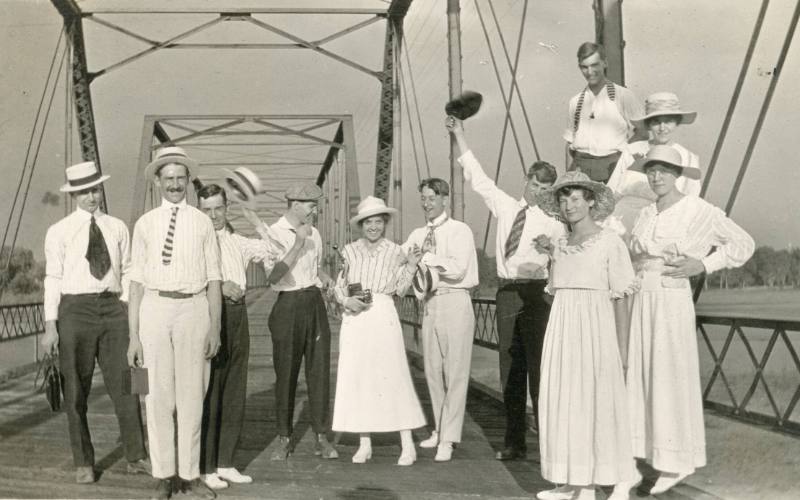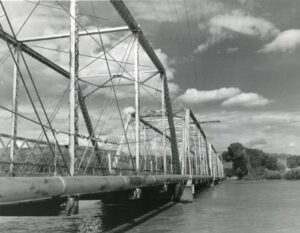
Members of Albuquerque’s Brownie camera club at the Barelas Bridge, circa 1916, courtesy Albuquerque Museum photo archive
The fancy new Barelas Bridge, built in 1910 across the Rio Grande on what was then the southern edge of Albuquerque, was a big deal. The Albuquerque Museum photo archive (some on line here, more that I’ve begun studying at the museum for possible use in the new book) has a bunch of pictures of the old Rio Grande bridges – people documented them, again and again.
The old Barelas Bridge was a wooden relic, rickety and unreliable. The new 1910 bridge was all steel and modernity. It allowed workers in Atrisco, across the river from Albuquerque, to reliably get to their jobs in the rail yard. It allowed farmers to get their crops to market. It, and a second bridge like it built around the same time at Alameda at the north end of town, made possible a community that spans a river.
When we think of the collective action problems around the Rio Grande that Albuquerque needed to solve to become a modern city, we mostly think about flood control, drainage, and irrigation. To understand a city, as I have written and said many times, you can always start with the water – the choices a community makes to solve water’s collective action challenges. Bridges belong on the list.


So true.
At the same time the bridges also allow people to do something unusual and often very calming to some of us – that is, we can be on the water and above it, yet we are not in it or threatened by it. For my own particular case the other great thing about bridges is that I can be near water and still not be subject to the motion of it.